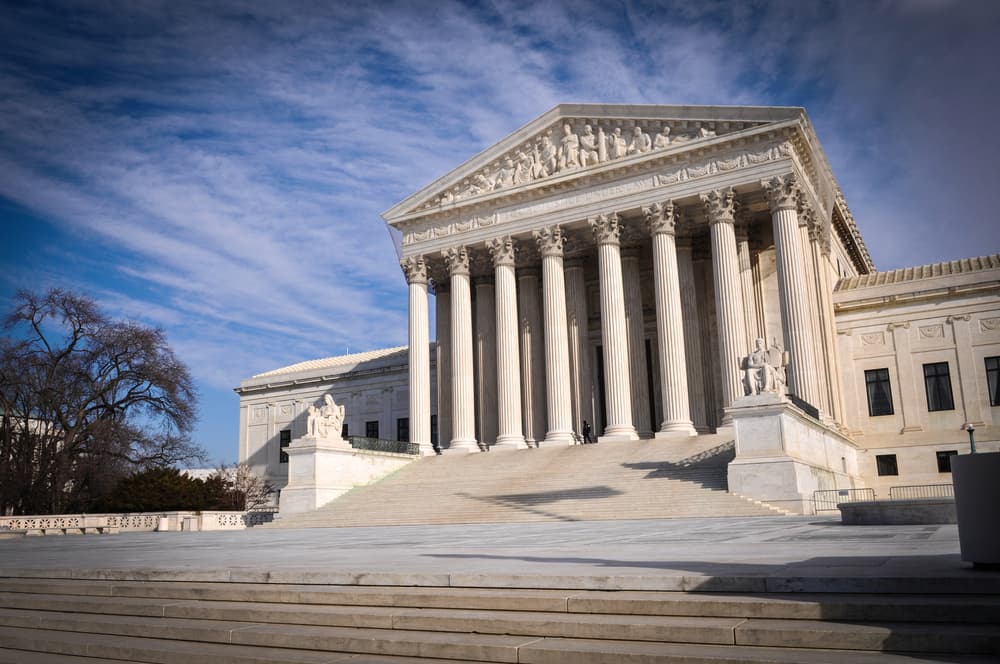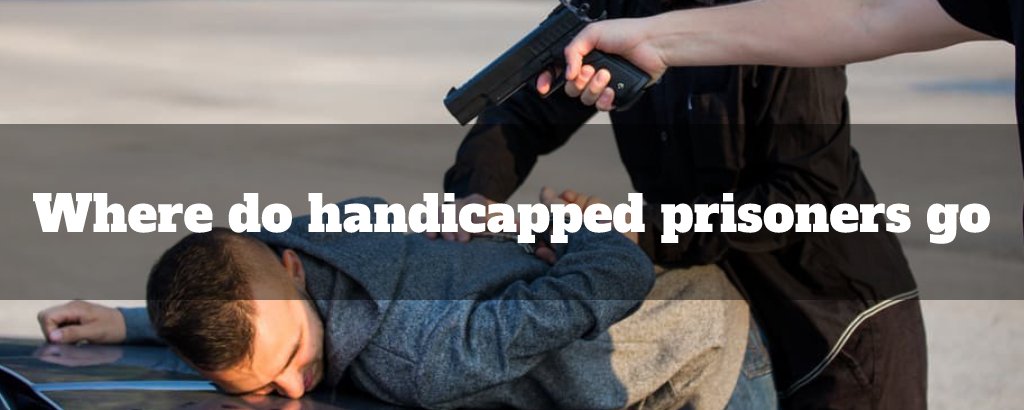Many prisoners with disabilities are in solitary confinement, often allegedly for their safety, due to a lack of suitable alternative facilities.
The prison atmosphere is difficult to manage for everyone, but it is complicated for those with disabilities. Sadly, approximately two out of every five state or federal prison inmates report a disability.
Physically challenged inmates are constantly at risk of being put in solitary confinement and all the negative consequences that come with it.
Although there is a shortage of data on the physiological effects of solitary confinement, the evidence suggests that it can exacerbate pre-existing disabilities or chronic diseases, primarily if prisoners are not provided with adequate care and treatment.
Additionally, a wealth of evidence demonstrates the terrible psychological effects caused by solitary confinement.
Even worse, offenders are frequently put in solitary confinement for practical rather than punitive reasons. For instance, to alleviate overcrowding, prison officials may assign physically disabled inmates to solitary confinement if there are no accessible beds available in the general prison population.
Inmates in need of assistance with daily activities like showering, getting dressed, taking medications, accessing legal libraries, or shopping at prison commissaries rely heavily on the services provided by corrections officers.
One estimate from 2003 suggests that up to 26% of state inmates have a mobility, hearing, or vision disability. Still, no nationwide statistics are currently available on the percentage of convicts with physical disabilities in jails, prisons, and detention facilities.
The percentage of inmates with physical disabilities in prisons and jails rises to 32 percent and 40 percent, respectively, when cognitive and self-care-restricting disorders are considered.
Additionally, reports suggest that as the jail population ages, the proportion of inmates in American prisons who have physical limitations will considerably rise.
Despite these well-known facts, prisoners with physical disabilities frequently do not receive the treatment to which they are legally entitled. Mental health treatment is crucial for them.
Discrimination against people with disabilities still occurs in prisons and jails across the country more than 25 years after the Americans with Disabilities Act (ADA) forbids public organizations from doing so.

Legal rights (the disabilities act):
In 1990, the Americans with Disabilities Act (ADA) was signed into law.
The Americans with Disabilities Act (ADA) is a civil rights law that outlaws discrimination against people with disabilities in all sectors of public life, including employment, education, transportation, and all public and private venues open to the general public.
The goal of the law is to ensure that individuals with disabilities have equal rights and opportunities.
The Americans with Disabilities Act (ADA) was enacted in 1990 and consists of five titles.
- Title I Employment forbids handicap discrimination in the workplace.
- Title II State and Local Government ensures that people with disabilities have equal access to all programs, services, and activities.
- Title III Public Accommodations addresses the responsibility of corporations and NGOs to provide accessible services to people with disabilities.
- Title IV Telecommunications compels phone companies to provide relay services for people with hearing or speech problems and close-captioning of Federally financed public service announcements.
- Title V Miscellaneous contains directions for Federal agencies involved in regulating and enforcing the other Titles and prohibitions on retribution and pressure.
Additionally, Title II and Section 504 of the Rehabilitation Act protects all prisoners with impairments. The 504 Act forbids discrimination against people with disabilities in programs that receive federal financial aid, including prisons. The ADA, which followed, used the 504 Act as a model.
Fortunately, the letter of the law is unambiguous for prisoners with disabilities. No eligible person with a disability should, due to such disability, be denied the benefits of a public entity’s services, programs, or activities or shall be subjected to discrimination by any such organization, according to Title II of the Americans with Disabilities Act (ADA).
- Dealing with legal ambiguities.
What rights are usually granted by federal law to inmates in the United States? The following is a list of what prison managers need to supply and do:
- Inmates with disabilities must have equitable access to the same programs, services, and perks as inmates without impairments. One prominent exception is when the involvement of an offender with a disability would constitute a severe risk to others’ health or safety.
- Inmates must have access to practical communication tools, including videophones, audio documents, Braille documents, captioned TV, and other media available to people without impairments.
- Prisons are required to provide equal access by making reasonable adjustments, modifications, or other accommodations. Though the terminology might be vague, the intention is obvious.
If you want to know more about the legal rights of disabled prisoners.
The role of the Supreme court.

In the Goodman & United States v. Georgia case, the US Supreme Court established a new precedent for this legislation. Through this critical judgment, the Court determined that if a prisoner is the victim of disability-based discrimination, they may seek financial compensation.
Tony Goodman v. Georgia case
Plaintiff Tony Goodman, a paraplegic prisoner, confined to a wheelchair, spent 23 hours each day in a cell measuring 12 by 3 feet in the Georgia State Prison. Goodman found it challenging, if not impossible, to swivel in his chair because of the cramped space in the cage.
Furthermore, there were no accessible restrooms in his cell. Goodman further said that prison officials neglected to provide him with essential medical attention and made no effort to involve him in prison activities that mobile inmates participated in.
Goodman asserted discrimination in his 1999 lawsuit under Title II of the Americans with Disabilities Act, or ADA.
No qualified person with a disability “should be barred from participation in or be denied the benefits of the services, programs, or activities of a public entity,” according to Title II of the ADA. Georgia asserted sovereign immunity, so Goodman lacked standing to file the lawsuit. In agreement, a district court granted summary judgment.
Yeskey Case decision by the supreme court
The Supreme Court determined on June 15, 1998, that state prisons are subject to Title II of the Americans with Disabilities Act (ADA), which forbids discrimination based on disability by state and local government programs in receiving benefits of the public entity. The case was Pennsylvania Department of Corrections v. Yeskey, No. 97-634, 1998 U.S. LEXIS 3888 (June 15, 1998). Although it declined to rule on whether expanding the ADA’s coverage to include state jails is legal under the Commerce Clause or the Fourteenth Amendment, the Court found no uncertainty in Title II’s coverage. The ruling upholds the Third Circuit’s ruling on this matter.
What data and research indicate
American prison conditions are harsh. However, it can leave you more vulnerable if you have an intellectual, developmental, or cognitive handicap, as hundreds of thousands of Americans in prison do.
The government body responsible for collecting data on crime and the criminal justice system, the Bureau of Justice Statistics, released a study in March 2021 that revealed that of the 24,848 prisoners they polled across 364 institutions, 38% reported having a disability of some kind. That corresponds to around 760,000 people with disabilities being detained as a whole.
According to the Bureau of Justice Statistics, those detained in jails and state and federal prisons are more than four times as likely to report a disability as the general population outside of incarceration.
A quarter of those polled said they had a cognitive impairment, such as trouble remembering or making choices. Similar numbers of people claimed to have been diagnosed with attention deficit disorder at some stage, and 14% claimed to have been diagnosed with a learning disability.
The percentage of people in prison with physical or intellectual disabilities is disproportionately high. The Centers for Disease Control and Prevention estimate that 26% of Americans have a handicap of some kind. 10.8% of them disclosed a cognitive handicap.
This is less than half the percentage of people who are incarcerated. And the numbers seem to be rising: in 2011–2012, 32% of prisoners indicated a handicap, with 19% citing a cognitive impairment.
These rates are likely to be understated, given how high they are. They depend on self-reports, and studies have shown that many people don’t disclose their disabilities, primarily intellectual or cognitive ones, out of fear of stigma or because they are unaware they have them.
From 2018 and 2019, 27 people with intellectual disabilities were interviewed about their interactions with the criminal justice system. Eighteen reported being arrested and incarcerated.
One 2018 survey found that over 4,000 individuals with severe mental health issues were being confined in solitary confinement in the United States. Again, this is probably an underestimation.
You can also read Disabilities Reported by Prisoners: Survey of Prison Inmates, 2016.
What people are saying about it
This is a question that everyone wants to answer. How are disabled people treated in U.S. jails? Check out the links below to see what other people are saying. How did they or their disabled family members feel about being in prison?
Story of real-life disabled convicts
- Explore Don Kemmerer’s story of a disabled prison about spending his time in a US prison.
He explained how difficult that time was for him and added that he was not permitted to have it with him when imprisoned because his cane would be viewed as a weapon.
- Read Dave MacEwen’s description
What happens to prisoners who use wheelchairs? Do they have a specialized area for such prisoners, or what?
He described his visit to numerous prisons and the availability of wheelchairs and their condition in those areas.
- Read Heide Velarde’s post about how he accidentally ended up in jail with a wheelchair.
He explained how a dog attacked him by mistake, he was carried to jail in a wheelchair, and was treated by a nurse there.
A former prisoner describes his interactions with other disabled inmates, some of whom were faking their disabilities. Anxiety issues were increasing because the disabled inmates were not treated; differently. They were subjected to a number of difficulties, including rank gang members assaulting innocent disabled inmates and other inmates stealing from them.
The owner of a YouTube channel about prison talk said that most disabled prisoners are taken to a mental hospital or medical facility.
For safety reasons, they don’t want people with mental or physical disabilities to be part of the general public. They will probably be sent to a place specializing in that, where disabled individuals can get everything they need.

